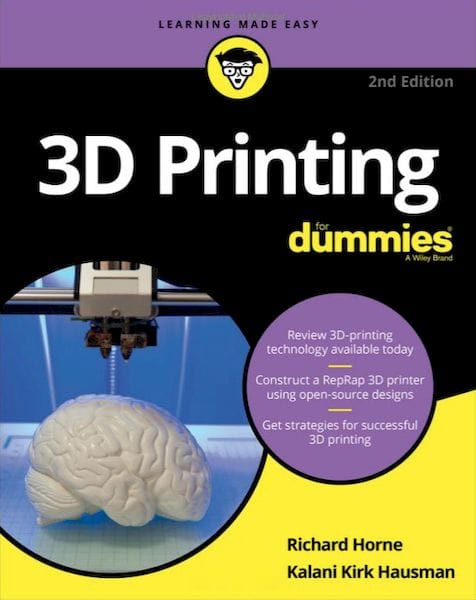
This week’s selection is the entry-level 3D Printing for Dummies by Richard Horne and Kalani Kirk Hausman.
Each week we’ll be selecting an interesting book on or related to 3D printing that you may enjoy.
The “For Dummies” series is well known not only for their trademark yellow book jackets, but also for their ability to provide a good grounding on any particular topic without having to know much about it before reading. The 3D Printing for Dummies book follows that approach.
The book is written by Kalani Kirk Hausman and Richard Horne, who happens to be well known in the 3D printing community and our blog. Richard is one of the leaders in our technology, as his near constant experiments in 3D printing often result in findings that help everyone.
One challenge facing the authors in this case is that 3D printing isn’t a simple topic. It’s not something anyone can just pick up, attested by the challenges that vendors found when attempting to market the technology to consumers a few years ago.
As a result, the 3D Printing for Dummies book spends some time explaining what the technology is, in all its different forms. Considerable time is spent explaining possible uses of the technology, which I feel is necessary for a proper understanding, but some readers may wish to “dive in” more promptly.
The book provides a good overview of 3D print materials that are commonly used by various 3D printing processes, as well as the concept of 3D models and how to find them – although there are not many words on how to create them from scratch, likely because that’s really out of scope for this book. There are plenty of other 3D CAD books in any case.
After explaining the different mechanical approaches to 3D printing mechanisms, this book then attempts to show the reader how to actually build a RepRap-style desktop 3D printer from basic mechanical and electronic components. While this is a daunting project for many, the book can lead one through the process successfully if the reader is up for the challenge.
This book was one of the earlier instances of a book introducing 3D printing to the popular market. However, don’t think it’s old, as it has been updated in a second edition, published in May of last year.
If you’d like a good introduction to desktop 3D printing and an understanding of how its used by industry beyond the desktop, especially if you’re contemplating building your own device, then by all means consider this book.
Via Amazon

